That much I did know - every pile of Russian hay or stack of leaning lumber had the potential to be a tank in waiting!
p.s. GREAT photo!
That much I did know - every pile of Russian hay or stack of leaning lumber had the potential to be a tank in waiting!
p.s. GREAT photo!
FWIW all late war factory schemes had one color plain wheeels or wheel hubs IN DIFFERENT COLORS… So “strobe” effect was an issue for Germans. All german armor pictured in this thread is pre-factory scheme implementation and, thus, painted by the crew who may or may not be aware of the problem when they painted the vehicles.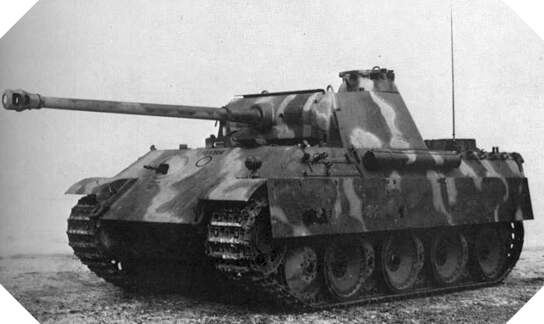
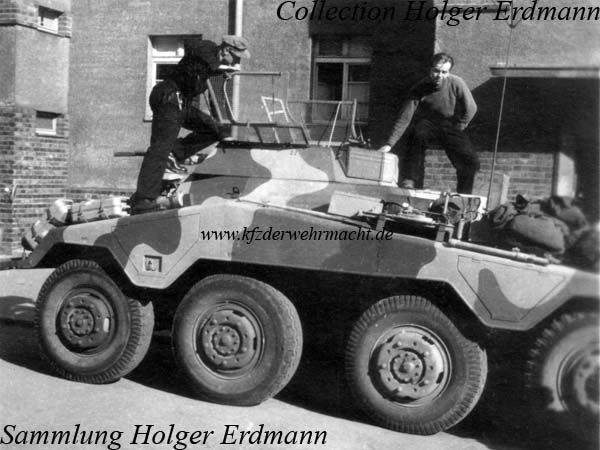
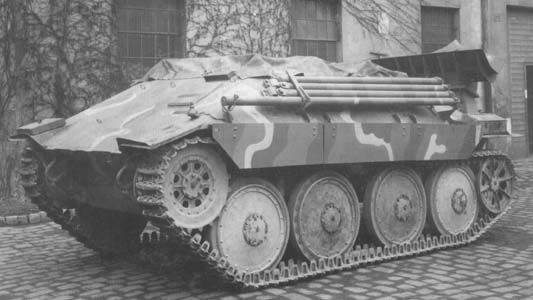
Yes - vary the colors of the different wheel hubs but paint each individual hub in just one color.
That way while on the move, a rolling round shape (might) be perceived as a stationary round shape, such as in a large roundish rock or a fallen tree trunk.
This is probably the BEST example of what NOT to do:
Don’t know how many more ways I can find to say it. - I’ve seen it. - I know it happens. - Take my word for it or don’t.
Also it has to do with just how the human eye and brain perceives repetitive movements. It is not JUST a “shape thing”. We are not so far removed for our predatory ancestors as to not perceive movement as a greater threat than a stationary object might offer.
I am going to offer one more such example and then hopefully I can bow out of this conversation:
There is a certain type of warning light for fire trucks used in the US that seems to be most popular in the New England area.
It consists of a motorized vertical stalk with two or more contrasting colored lights rotating, spinning, fan like, on spinning arms. (I found photos of a three light device.)
It creates exactly the same winking rotational effect as the split camo paint job on the tank wheels.
This type of light is commonly called a ROTO-RAY. It looks stupid as He** going down the road - but it certainly WORKS to draw attention (Especially in someone’s rear view mirror!).
Hopefully perhaps here I can rest my case!
.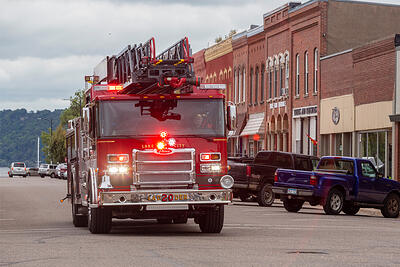
Ok, so anywhere between 30 and 200 meters. For armor on a battlefield that is almost point blank range. Even if the strobe effect is gone, at that distance, you will hear and feel the movement of an AFV. Now thinking on it, I do recall seeing something similar on the tracks I used to crew. The wheels would be coated in dried mud & dust, but there would be a greasy dark spot near the grease nipple on the wheel hubs from field maintenance. At close range it was noticeable, but not at any standard field ops distance.
Getting back to your own personal observation distances, that is also far closer and lower than a fast moving low flying Jabo will first see the vehicle. Paralleling a road at say 250 knots (roughly 4 miles per minute), 1/4 mile away (440 yards or 400 meters) and throw in some altitude- perhaps 150 feet to get a reasonable view. Think of yourself on a freeway overpass looking at a big rig tractor truck w/o a trailer on the hiway underpass below at that distance. Don’t forget that the pilot has to have his head on a swivel to beware of obstacles, hostile fire, and the few remaining Luftwaffe aircraft that occasionally did appear near the front. The strobe effect will be reduced by distance and these other factors.
Again, I will bring up the point that these vehicles are pristinely maintained collector or museum vehicles. They are not dull faded and dusted down from endless weeks outdoors like the vehicles of any regular army, but often kept in some sort of storage or display facility to maintain that showroom appearance. As they should be. They are valuable working relics of the war. The paintwork is often quite bright, and will exaggerate that color contrast.
It’s important to note there is a lot of complex physiology that goes into how the eye perceives flicker. Studies show that 10 Hz is the most perceptible flicker rate. A Hetzer wheel at top speed has a rotation rate of 4 Hz, and I imagine wouldn’t be that noticeable.
Also not saying you are wrong but just because it’s in the manual doesn’t mean it works or is a good idea. The Germans applied Zimmerit for most of the war wasting time and resources for a problem that mostly not a problem
I would still suggest you paint 'em like the German Field Manual tells you to. But hey, you are the Masters of Your Own Model worlds and I doubt any competition judge (besides me) would ever even mention it.
(I once got set back to Second Place because my front end alignment on a big scratch built truck was too "Toe Out’ even though I had set the steering to “full hard left” just so you couldn’t tell. AND the judges were not supposed to move or adjust the model. - I do admit the alignment WAS off and I was trying to hide it - have they never seen a truck out of alignment before? True story
So my advice is illustrated below as seen on these pristine Museum vehicles. Sorry but I mistakenly photographed them AFTER we had cleaned them!
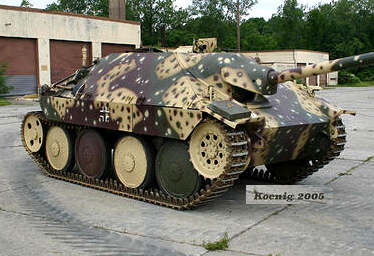
I’m not sure why you are coming off a bit condescending. The manual might state one thing but as has been shown vehicles existed with and without split camo wheels.
I think it’s up to the modeler. I doubt a 17 year old conscript arriving on the russian steppe with little training and no artistic talent with only a half hour to apply some camo before Ivan put a 152mm shell through his tank thought much about how best to apply it
Stik ~ you are still trying to make your case predicated on the idea of “yes, I know the manual says otherwise but hey, it cannot hurt that much, can it?”
You keep saying “but you would be too far away” or “dirt and dust will quickly cover it up”. You always stop short of declaring the manual to be wrong and your on the job experience to be more correct.
Mead ~ I don’t really know from Hertz in this case but I have to say that you are mistaken.
I would suggest that instead of looking at the “rotational hertz” of the wheel, you instead look at the “scanning rate” (hertz) of the human eye. (Yes the electronic image from the eye gets updated to the brain “X” number of times a second.) All I know is that the scan/refresh rate is something less than 24 frames a second, otherwise we would be able to see the frame jump of the movie film in a theater, the screen refresh rate of our old television sets and the constant on/off flickering of fluorescent lighting.
THAT is the Hertz you should be looking at. *
*If the scan rate of the human eye is 20 times a second then the observer is going to receive updated visual information on that rotating wheel every 1/20th of a second. Even driving at a moderate speed that is more than 6 to 8 degrees of angular rotational change per visual scan. I am fairly sure I would easily take notice of something turning 8 degrees within my field of view.
Whereas with a solid colored spinning disc I would likely perceive NO movement at all!
I’m a physicist so I don’t need a lecture on hertz.
Hetzer wheels are 82 cm in diameter, so they have a circumference of C=pi*d = 257 cm. This is the lateral distance a Hetzer wheel moves in one rotation.
The top speed of a Hetzer is 26 MPH = 1162.3 cm/s
Therefore each wheel of the Hetzer completes
1162.3 cm/s * 1 rotation/257 cm = 4.5 rotations/s which is 4.5 Hertz rotationally.
I doubt that at 4.5 Hz you’d get a strobe effect. Strobe lights are designed to flicker at 10-12 Hz which is maximally perceptible strobe detected by the human eye, faster flickers will eventually blur into a continuum. This is the reason your eye can’t see a 60 Hz light bulb flickering. Under 10 Hz and your eye jsut isn’t tuned to pick it up. It’s too slow to draw much attention. This becomes even more drastic at low speed. If we assume the Hetzer is travelling at half maximum speed ina. Convoy you are looking at just over 2 Hz which is very slow for a strobe effect
Again to each their own, but I think the photos shown here have indicated both wheel types existed
Mead ~ I am not smart enough to tell you where your calculations go astray.
All I can say is that based on actual observation I know your calculations to be flawed.
Again, I would suspect that you are focusing your thinking too much on the RPM of the wheel and too little on the angular progression of that same wheel between scans as made by the human eye.
p.s. We all have been using the term “strobe” in an entirely incorrect manor here. (I have been doing it as well.) I am not saying the wheel actually appears to flash on and off, nor does it “wink” at you.
As a scientist would you happen to know what the proper expression for a 2-color rotating disc might be? Or how that particular optical effect is expressed?
There is a lot going on here for sure but I can tell you my calculation isn’t wrong.
To be a fair test you wouldn’t be staring at a vehicle that you know to be there and cherry picking the wheels to find out if they strobe. You’d drive a vehicle by at say 300+ meters and you’d have to tell me where it’s based on strobe. I’d be astonished if you could do this based on strobe alone
I would imagine strobe is the correct term here. If moving fast enough the colors would blend into one as your eye fails to pick up the motion. At very slow rates I strongly doubt the effect would be pronounced enough to draw attention from a distance
In worst case scenarios you will know you have a potential problem before the vehicle moves even 50 feet.
No, your calculations are not wrong, you are just basing them on the wrong factors to measure. (I said they were flawed, not wrong.)
*And here I thought you would cheer my damnation of the term strobe. Strobe means to rapidly turn on and off (or dim/brighten) which is certainly NOT what is going on here.
Strobe might not be entirely correct but it’s gets the idea across. I would argue that camo is no good for movement by any metric.
The two tone wheel problem would be a problem for the two tones on the vehicle as well. Those stripes for instance on tiger tanks would move at the same rate as the wheels (assuming no slip) n would be just as likely to get picked up by your eye as the wheels.
Your eye is incredibly well tuned to picking up motion and light. If you look at even the most well camouflaged animals, they can remain very hidden when still but the moment they move the jig is up.
That’s the reason you don’t notice that spider on the wall until it moves. Admittedly I have zero combat experience but I hold steady in my assertion that camo is for static vehicles not moving ones.
This changes for planes where the blue sky and blue underbelly make motion hard to detect
Mead ~ I do apologize if I come off sounding condescending. You are not the first person to tell me this. (Just ask the folks over on the Streamline and Art Deco blog sites.)
This is just my style of discussion and debate. My words are being challenged and my experience simply tells me otherwise. I don’t know how to BE any other way under these circumstances.
I guess I got my back up because others did the same to you, discussing their experiences and you seemed to take it personally. I don’t doubt what you saw was some sort of strobe effect that caught your eye, and I think your intentions were good, trying to bring people’s attention to it. But when presented with evidence to the contrary from others experience and photo evidence your response seemed to be “well keep doing it wrong then”
My personal take on WW2 vehicles is “anything you can show I can show different” it was a desperate time and manuals weren’t always followed so almost any variation is likely correct
Definitely don’t want this to blow up, some of your tutorials are awesome and I would like this forum to remain as cordial as possible
I’m not gonna let it come to that.
Again I apologize to both you and Stik if I am coming off a little “squirrelly” here.
There is also the very good chance that the folks drawing up the regulations were making an assumption that the rotating wheels would give up the game, without considering the vehicle on its own would do so once it started rolling across the terrain.
Pretty sure the Third Reich had its own fair share of armchair advisors making rules without the real-world experience to back up their statements.
No, I sure will not say that the manual is wrong. First off, I’ve never read, let alone seen a Wehrmacht Heer manual on camouflage painting of vehicles. How can I say such a thing with those facts. And as shown in photos, variations from the manuals did occur. It is not wrong to paint road wheels in single color, or multi color, even on the same vehicle. Or cover them up with dust, dirt, & mud. All of the above occurred.
What I do say, based upon 24 years of soldiering, is that manuals are not always followed to the letter. As photos have shown. Also I do say that based upon field experience in that nearly quarter century of service is that the strobe effect that you claim would be a beacon for fighter bombers is not as pronounced as you initially proclaimed in your original post, due to factors that I listed in my previous post.
Is it listed anywhere in the WH manual to create a concoction of local soil/sand/mud to use on vehicles to help them blend with the local terrain? That’s what 5th Light Division did after arriving in Africa to improve their chances of survival before the Tropen colors were developed and issued to the troops. I saw the same thing done at NTC for exercises there on Autumn Temperate MERDC vehicles. The 82nd Airborne did the same thing to their NATO/MERDC camo Sheridans upon arriving in Saudi Arabia in 1990. I don’t recall that method being in any US FM on camouflage. But soldiers like to improve their chance of survival immediately and worry about the regs later.
Lastly I have a suggestion. Take one of your 1/35 models and set it down 10 meters from you, then look at the road wheels. That’s a scale equivalent of 350 meters. A fairly reasonable, but not too close operational distance. Now try it at 20 meters. Those wheels get real small, real quick.
I think the discussion about distance is the most relevant.
Close enough to see strobe = more than close enough to see the whole thing
The above applies to binoculars as well, the absolute distance is greater but the relative effect is the same.
With good contrast, smallish (20 feet or less) white motorboat against dark background, I can see the movement at 1.7 to 1.8 miles but I would need very good binoculars to see any strobing wheels.
With low contrast, camouflaged tank moving in forest, I would have troubles at 1/3-mile. I would hear before I can see.
Regulations do not necessarily reflect science. If the rules say monochrome wheels then I don’t think troops would waste time on painting the wheels. On the other hand, if the troops think that a row of perfect circles in the bushes might give away their position to careful observation with binoculars then they WILL try to hide thos wheels somehow.
We were told to look at our camouflage efforts from 100 to 200 feet away through binoculars turned backwards. If we could identify objects then the enemy would see it as well.
For those modelling a specific subject, like Pz IV xyz of K regiment in M division then photos of the real thing is the only truth.
When you can’t hide your tank you just make it look like something else
I read somewhere that some of them got their central roadwheels painted dark to make it look like a truck, wheels front and rear with shadow in between